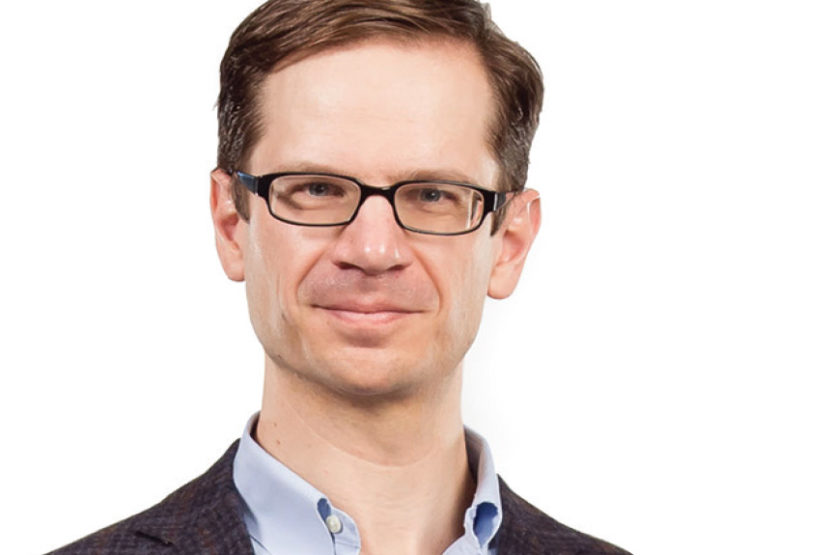In Class: Prime Mover
 Associate professor of mechanical science and engineering Matthew West. (Image by L. Brian Stauffer)
Associate professor of mechanical science and engineering Matthew West. (Image by L. Brian Stauffer) Human movement is an increasing focus of engineering. There’s a real perception that this is something we, as engineers, should be trying to do something about—helping people who have disabilities and impaired motion. New device technologies—such as prosthetic limbs and other assistive devices—are a big growth area, in general, and one that students are very excited about.
A lot of incoming students are passionate about helping people and making a difference in the world. Getting a secure job at a big engineering firm isn’t the goal for many of our students anymore. They actually want to make an impact on people.
TAM [theoretical and applied mechanics] classes are the very beginning of engineering knowledge. These are 200-level classes that we’re talking about. Nothing’s really changed since Newton discovered F=MA [force equals mass X acceleration]. There are relativity and quantum mechanics and things like that. But for day-to-day engineering—say you want to build machinery, you want to build a robot, you want to work on prosthetic devices—the basic mechanics are the same.
We’ve had this huge effort to update some of our largest foundational courses. There’s a nine-person team in mechanical engineering that’s supported financially by the College and the department to
improve these courses.
We get the students working with each other—solving problems during lectures and discussion sections. And that’s been really positive. I see dramatic improvements in attendance rates and reported satisfaction.
It’s been great to work with the team from CITL [UI’s Center for Innovation in Teaching and Learning] because they’re skilled at taking video.
We have an arrangement with the Illini baseball team that allows us to take video of its players, so we can study the mechanics involved in a baseball swing.
The Illinois women’s gymnastics team also has been super-helpful. We took a huge amount of footage of its star gymnast [Giana O’Connor] doing her routine on the uneven parallel bars.
Satellites going around the Earth, gears turning in a machine—it’s all rotary motion. Similarly, gymnasts do many kinds of rotary motion. They flip between bars, they flip off and rotate, and they spin from one bar to the other.
When a gymnast wants to do a handstand on top of the bar, why does she start by hanging below the bar and then flexing her hips in a certain way? We show the video to students and say, “She’s using her hip and torso muscles to inject energy into her motion, which she will later transfer up into the potential energy that allows her to do a handstand.”
I’ve been having a lot of fun. At least for me, that’s really been the bottom line. You see students excited about the [curriculum]—that’s stimulating. Much better than boring everybody to death. Engineering is a very tough program. But, hopefully, we’re making it a little bit friendlier.
Edited and condensed from an interview conducted on Aug. 25, 2015.


